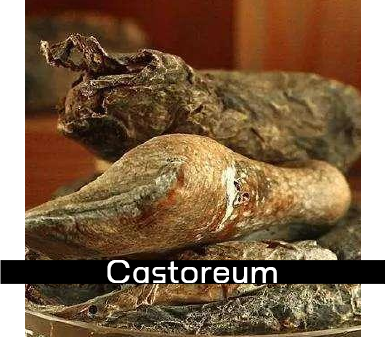
Talking to the Moon, is inspired by Su Shi’s timeless poem Prelude to Water Melody, this perfume paints a minimalist portrait of the bittersweet solitude experienced while drinking alone under the moon. The perfumer’s intention is to evoke a sense of impermanence and nostalgia, reminiscent of lost friends and life’s fleeting nature.
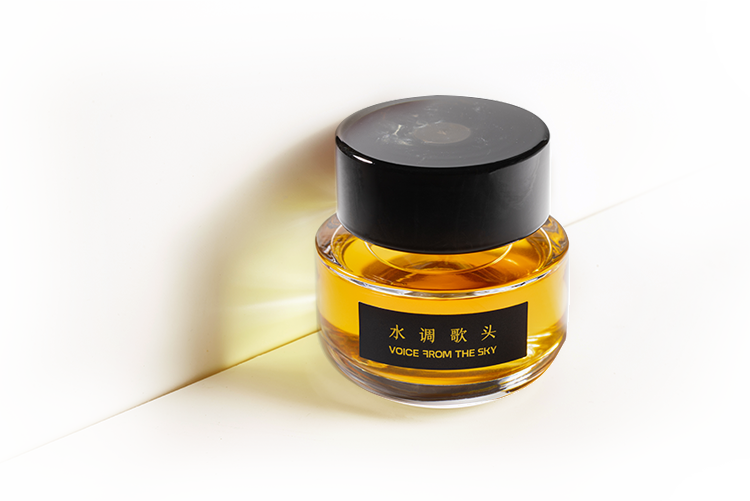

The upper notes evoke images of a cool breeze and a bright moon, capturing the ethereal sensation of drinking under the moonlight. The lower notes introduce a warmer, slower pace, with sandalwood and orris serving as a turning point, like moonlight filtering through a veil, symbolizing a long, sleepless night.
In the perfumer’s view, “regret”is the eye of the entire composition, intense yet resigned. Castoreum is chosen as the heart of the fragrance, evoking the sensation of warm tears welling up, contrasting with the sweetness of osmanthus and red bean paste to create a bittersweet effect.
Finally, this perfume concludes with a sense of tranquility, as the moonlight bathes both the mountains and the heart. Cashmeran is used to mimic the silky touch of fabric, offering both self-comfort and solace.

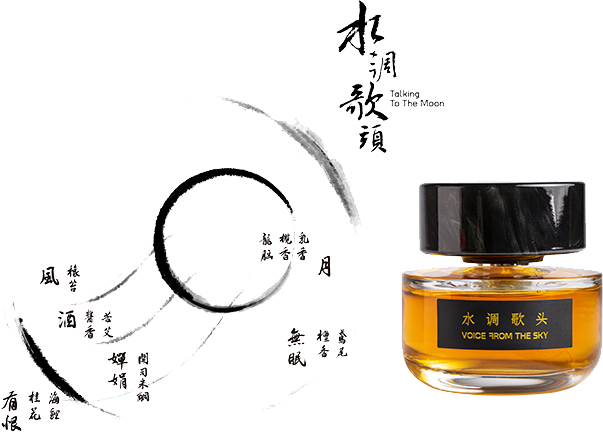

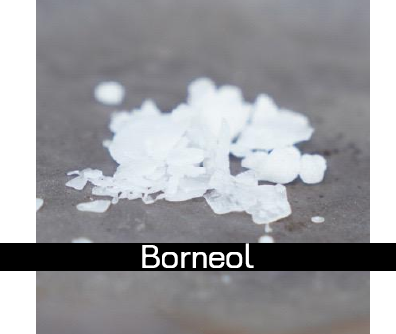
Borneol, one of the four traditional Chinese incense ingredients, is often used in eternal lamps. In this fragrance, the perfumer employs it to symbolize the bitter chill of moonlight and the endless night.

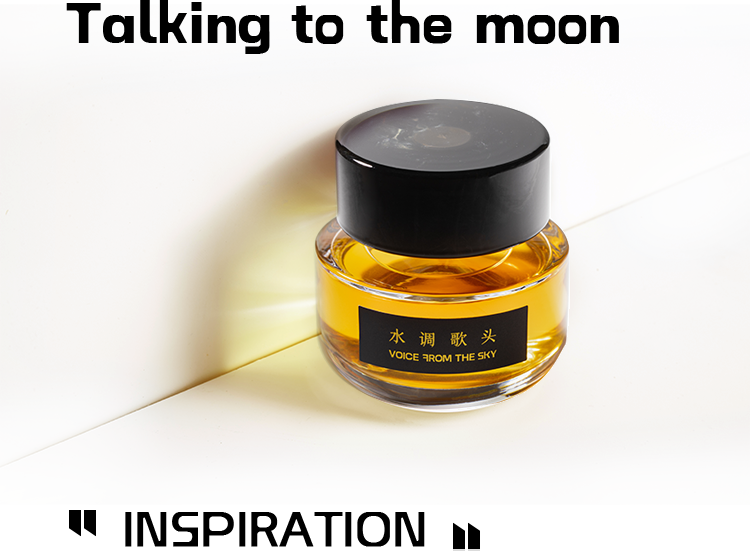
Talking to the Moon, is inspired by Su Shi’s timeless poem Prelude to Water Melody, this perfume paints a minimalist portrait of the bittersweet solitude experienced while drinking alone under the moon. The perfumer’s intention is to evoke a sense of impermanence and nostalgia, reminiscent of lost friends and life’s fleeting nature.
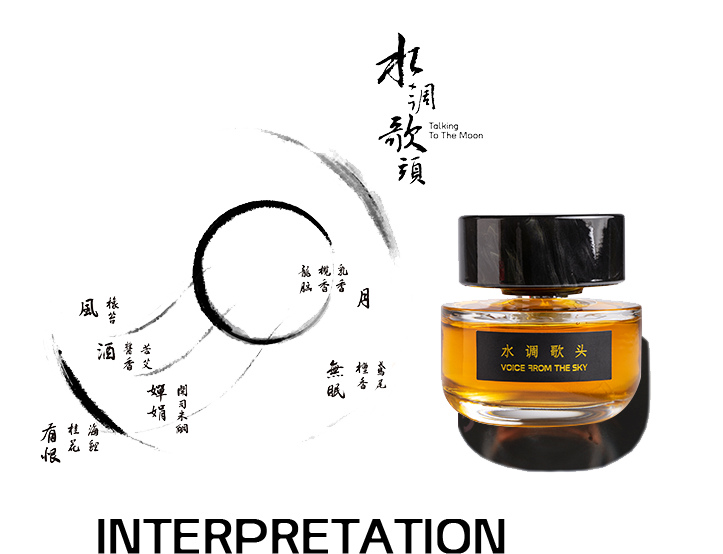
The clean floral scents of lily of the valley, begonia, and lilac are immaculate, light, and airy, from which emerge the watery elegance of this perfume, perfectly aligning with First Hug, the first creation in the collection. However,as soon as the freshness of Yuzu and watermelon comes into the scene, the fragrance vibrates again into a lively and dynamic fashion.
Cheese, honey, and musk together depict this perfume with a warm and sweet undertone, revealing the natural body odor in children. This unadorned fragrance lingers around whenenver it is worn. Returning to childhood again is impossible for us; however, this perfume, filled with companionship and love, could empower us, through children’s eyes, to once again interpret the world with goodwill.
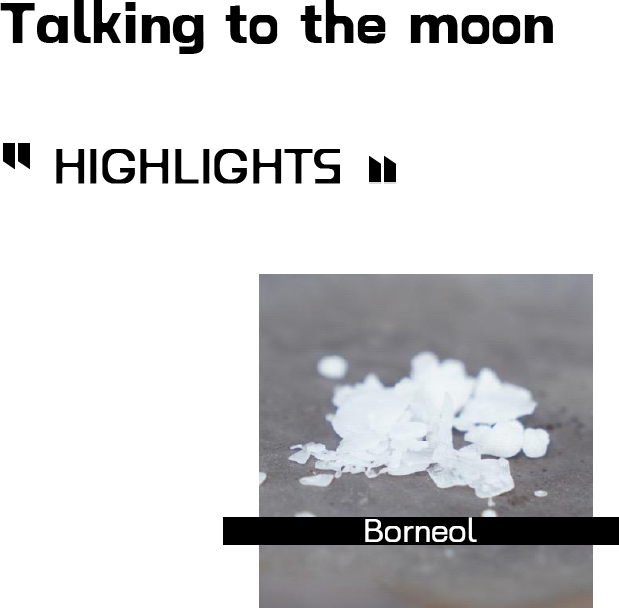
Borneol, one of the four traditional Chinese incense ingredients, is often used in eternal lamps. In this fragrance, the perfumer employs it to symbolize the bitter chill of moonlight and the endless night.
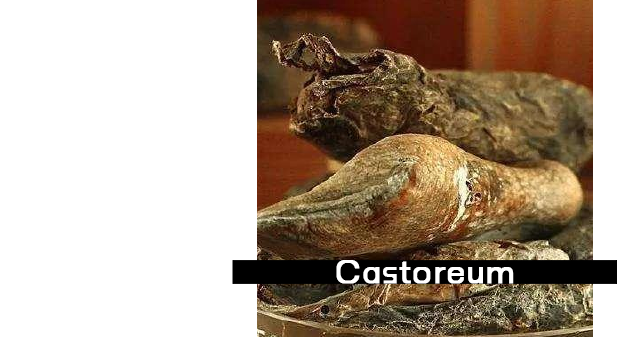
Castoreum, a rare natural animalic note, is used in Traditional Chinese Medicine to treat hysteria and insomnia. The perfumer has harnessed its emotive qualities to mimic the warm sensation of tears welling up.
Interestingly, the combination of these two ingredients producesa distinct ink-like aroma, which the perfumer later discovered to be an unintentional homage to the ancient Chinese practice of blending borneol and musk to create the Imperial Ink.




